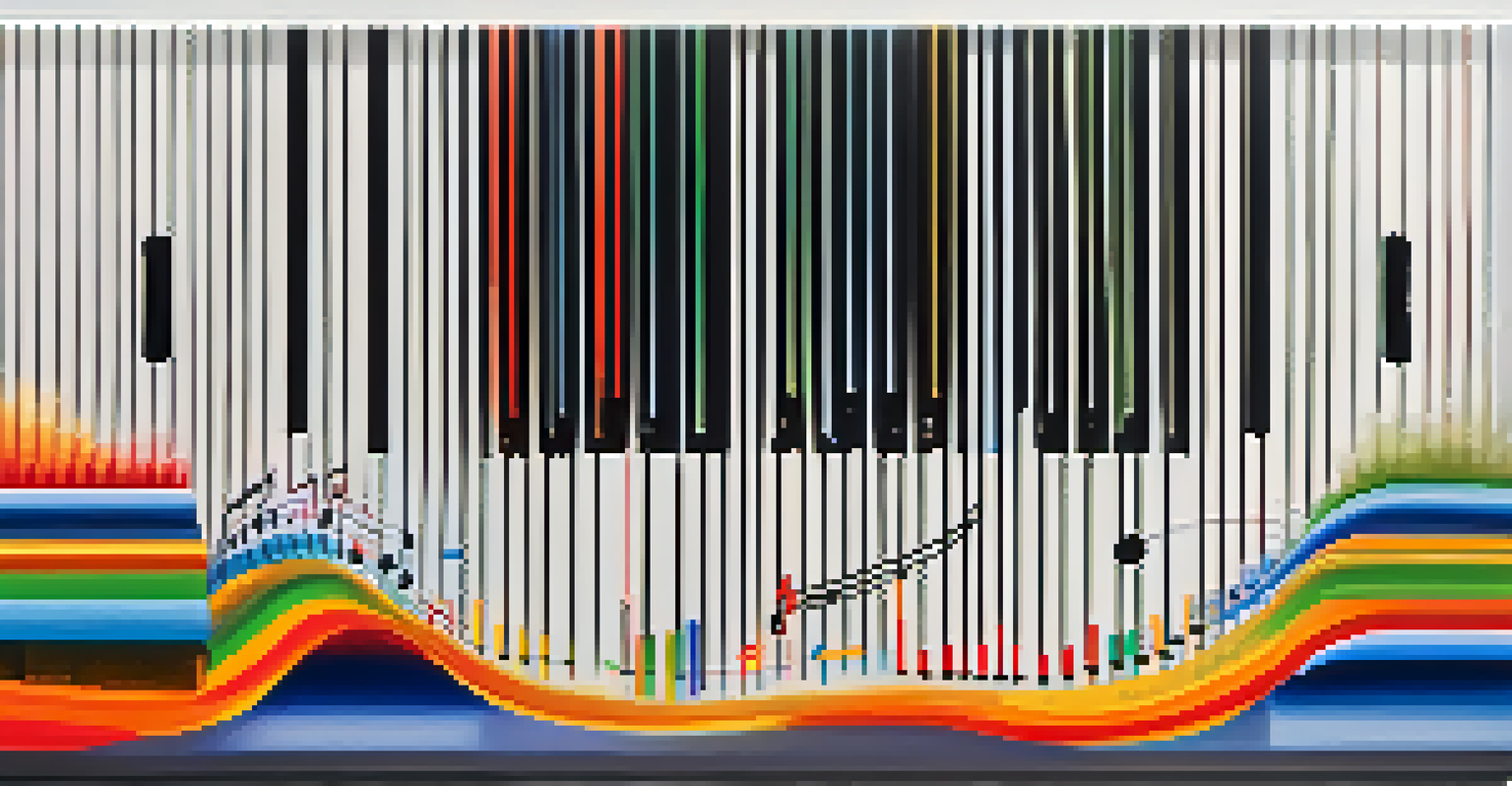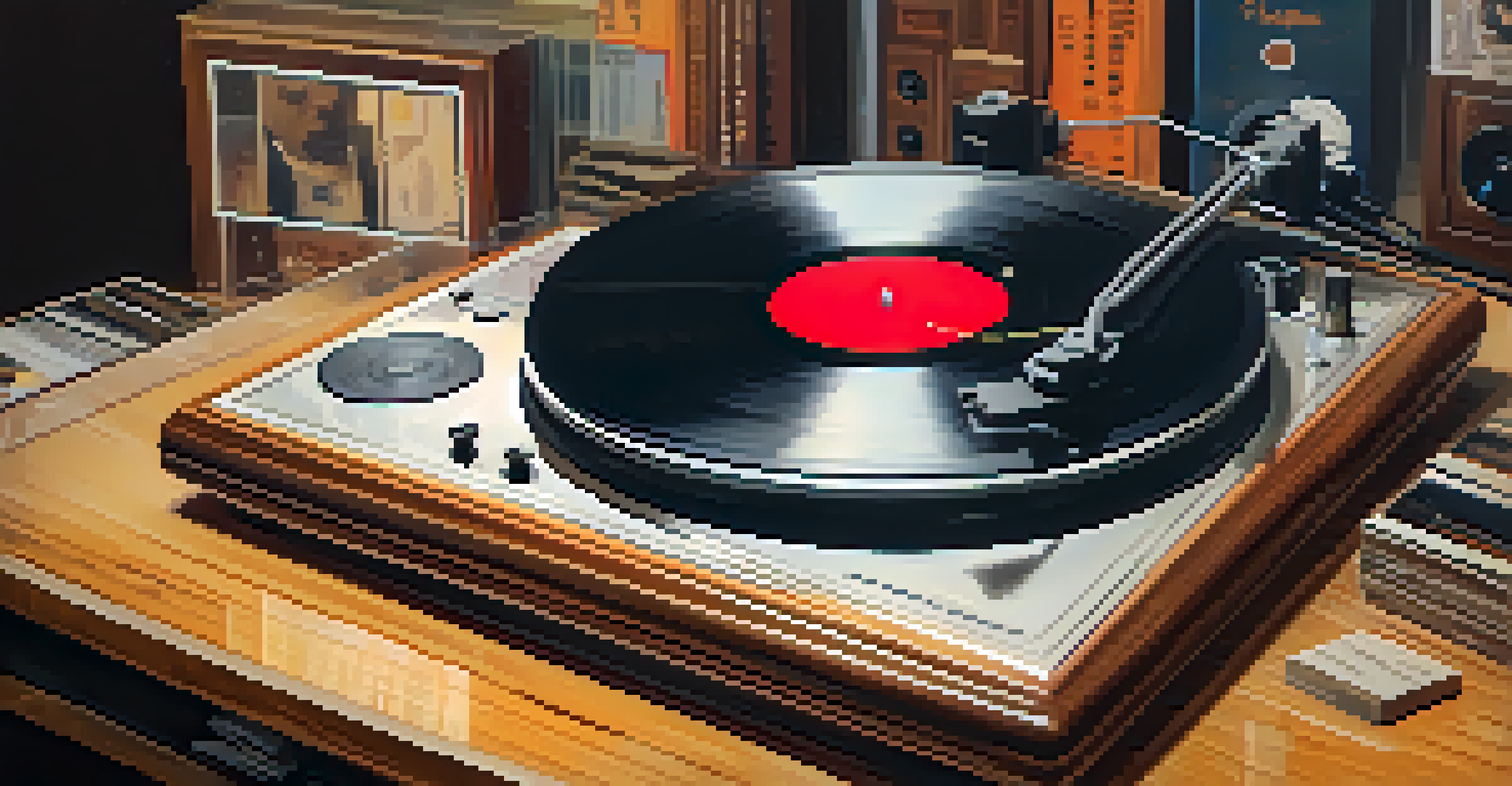Exploring Creative Music Sampling: Techniques and Best Practices

Understanding the Basics of Music Sampling
Music sampling is the practice of taking a portion of a sound recording and reusing it in a different song or piece of music. This could be a melody, a beat, or even a vocal snippet. Think of it like borrowing a favorite line from a book to create a new story; the essence remains, but it transforms into something unique.
Music is the shorthand of emotion.
Sampling has deep roots in hip-hop and electronic music, where producers often pulled from a wide array of genres. The beauty of sampling lies in its ability to blend different musical elements, creating innovative sounds and textures. Just as a chef might mix spices to enhance a dish, musicians can use samples to elevate their tracks.
However, understanding the legal implications of sampling is crucial. Using someone else's work without permission can lead to copyright issues, so always seek to either license a sample or use royalty-free materials. This way, you can explore your creativity without any legal bumps along the road.
Choosing the Right Samples for Your Project
The first step in sampling is selecting the right material that resonates with your artistic vision. Consider the mood and vibe you want to create; a soulful vocal sample can evoke emotion, while a hard-hitting drum loop can energize a track. Like choosing the right paint for a canvas, the sample you select can set the tone for your entire composition.

Explore various genres and historical time periods for inspiration; sometimes, the most unexpected samples can lead to groundbreaking ideas. For example, taking a classic jazz riff and layering it over a modern beat can create an intriguing fusion. This cross-genre experimentation can give your music a fresh, exciting edge.
Music Sampling and Creativity
Sampling allows musicians to blend different elements, enhancing creativity and producing unique sounds.
Additionally, pay attention to the quality of the samples. High-quality, well-recorded samples will ensure clarity in your final mix. Investing time in finding the perfect sample can significantly impact the overall sound of your project.
Techniques for Creative Sampling
Once you've chosen your samples, it's time to get creative with your techniques. One effective method is time-stretching, which allows you to manipulate the speed and pitch of a sample without altering its quality. Imagine stretching a rubber band; it can change shape while still retaining its essence, much like your sample.
The best thing about music is that it can change your mood, and it can change your mind.
Layering different samples can also create a richer sound. By overlapping various elements, you can build textures that captivate listeners. For instance, combining a vocal sample with a synth line can produce an ethereal effect that draws the audience in.
Moreover, experimenting with effects like reverb, delay, and filtering can transform a simple sample into something extraordinary. It’s akin to adding different seasonings to a dish; a little sprinkle of creativity can elevate your music to new heights.
The Role of Technology in Sampling
Technology has revolutionized the world of music sampling, making it more accessible than ever. With digital audio workstations (DAWs) and software like Ableton Live or FL Studio, anyone can start sampling with just a computer. It's like having a high-tech kitchen at your fingertips, where you can whip up delicious sound concoctions.
Sample packs and online libraries have also emerged, offering a treasure trove of sounds for music makers. These resources can save time and inspire new ideas, providing everything from drum hits to vocal chops. Think of it as a buffet of musical ingredients waiting to be mixed and matched.
Legal Considerations in Sampling
Understanding copyright laws and obtaining permissions is crucial to avoid legal issues when using samples.
Furthermore, advancements in AI technology are beginning to influence sampling. Tools that analyze and suggest samples based on your style can help streamline the creative process. However, it's essential to remember that while technology can assist, your unique artistic voice should always shine through.
Ethics and Copyright in Music Sampling
Navigating the ethics of music sampling is just as important as mastering the technical aspects. Respecting the original artists and their work not only fosters a healthy music community but also enriches your own creative journey. Imagine building a reputation as a collaborator rather than a thief; it opens doors to new opportunities.
Understanding copyright laws is crucial for any aspiring producer. Many artists choose to clear samples, which means formally obtaining permission to use their work. This process can sometimes feel daunting, but it’s a necessary step to avoid potential legal troubles down the line.
Additionally, consider using royalty-free samples, which are specifically created for others to use without legal repercussions. These resources allow you to explore your creativity freely while supporting artists who produce these samples. It’s a win-win situation that encourages collaboration and innovation in music.
Incorporating Samples into Your Music Effectively
Integrating samples into your music requires a keen sense of arrangement and mixing. Start by placing samples strategically within your track to enhance the overall flow. For example, introducing a catchy sample during the chorus can make it more memorable, much like a repeated catchy phrase in a conversation.
Be mindful of how samples interact with other elements in your track. Balancing levels and frequencies ensures that your samples compliment rather than compete with other instruments. It’s like creating a harmonious dinner table; each dish has its place, contributing to a delightful culinary experience.
Effective Sample Integration
Careful arrangement and tweaking of samples can significantly improve a track's overall flow and impact.
Finally, don’t hesitate to tweak samples to fit your vision. Cutting, reversing, or layering samples can create unexpected results that surprise and engage your audience. This willingness to experiment can lead to unique soundscapes that set your music apart from the rest.
Showcasing Your Samples and Finalizing Your Work
Once you've crafted your track, it's time to showcase your work and share your samples with the world. Consider platforms like SoundCloud or Bandcamp, where you can reach potential listeners and collaborators. Sharing your creations can spark conversations and connect you with like-minded musicians.
Additionally, creating a portfolio of your sampled work can attract attention from music labels or other artists looking for collaborators. Think of it as building a resume that highlights your unique skills and creativity. This portfolio can demonstrate your range and expertise in music sampling.

Lastly, remember that finalizing your work often involves iterations. Don’t shy away from revisiting and refining your tracks as you grow as an artist. Each project is a stepping stone in your musical journey, and the more you practice, the more your unique style will shine through.